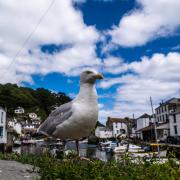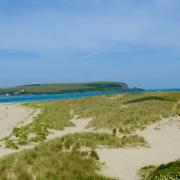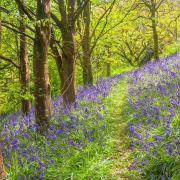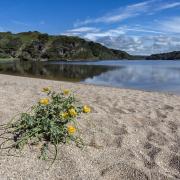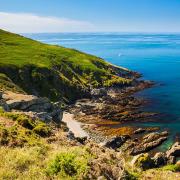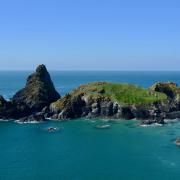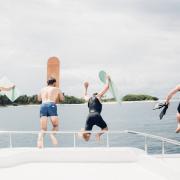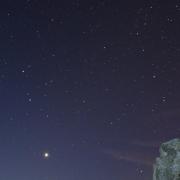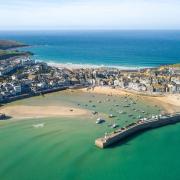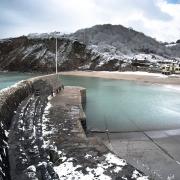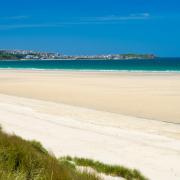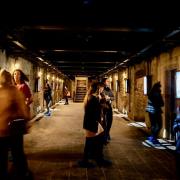Award-winning photographer David Chapman continues his series on Cornwall’s Areas of Outstanding Natural Beauty. This month he explores the South Coast

The South Coast Western AONB comprises the coastline from Marazion to Porthleven, the whole of The Lizard peninsula including both north and south sides of the Helford River as far as Maenporth, near Falmouth.
There are a huge number of access points with suitable parking and facilities, the most popular are at Marazion, Kynance Cove, Lizard Point, Cadgwith and Coverack. This month I am simply going to pick out the top eight photography locations along the coast of this AONB from west to east.
St Michael’s Mount and Marazion

Timing: to photograph St Michael’s Mount either high tide or when the tide is lapping over The Causeway are good; try to visit just after sunrise or just before sunset for the best angles of light.
Subject Matter: there are many good viewpoints of The Mount including the mouth of the Red River and the dunes to the west and The Causeway and harbour to the east.
Tips: It’s vital to find something of interest in the foreground to your photo whether that is rocks, The Causeway, a reflection, ripples on the beach or a swan.
Wildlife: the dunes have wildflowers such as sea holly and sea rocket.

Prussia Cove
Timing: early morning is lovely at Prussia Cove, the view from Cudden Point can be amazing at sunset.
Subject Matter: there is a lovely old fisherman’s hut; the cove has cart tracks cut through the rock; there are plenty of wildflowers including thrift and sea campion in early summer.

Tips: this is a great place for snorkelling (handy if you have an underwater camera); try walking to the west as far as Cudden Point for views along this rugged stretch of coast and for watching the sun set over St Michael’s Mount (telephoto lens required).
Wildlife: silver-studded blue butterflies can be seen between Prussia Cove and Cudden Point and there is often a very tame kestrel.
Porthleven

Timing: any time of day can be interesting with plenty to photograph in various orientations; it is well-known for its storm photos but these are unlikely in June. High tide tends to be more pleasing than low tide; I like dusk when street lights come on and the combination of blues and yellows make the place very colourful.
Subject Matter: plenty of subjects around the harbour with colourful boats; lovely cottages scattered around the village; the iconic clock tower is the main focal point near the harbour entrance and the jetty can be photogenic.
Tips: in rough weather get here at high tide to see big waves breaking against the sea wall to the east of the jetty.
Wildlife: the most obvious wild creatures are the herring gulls around the harbour which can make good photographic subjects but head out of the village to the west to see some lovely banks of thrift in flower or walk east to Loe Pool if you want some more productive bird watching.

Mullion Cove
Timing: best at high tide when the harbour is full of water and for most purposes I would recommend sunset though early morning (an hour or so after sunrise) can be very appealing.
Subject Matter: the harbour is the obvious focal point, try using the fisherman’s hut on the harbour wall as a point of interest. The various boats and fishing gear are useful for close-up photography.

Tips: the harbour can be captured from the surrounding cliffs, most obviously the slope to the north but I would recommend walking south up the hill onto Mullion Cliff as far as ‘The Chair’ for a wider view of the area.
Wildlife: when walking on the cliffs here watch for peregrine falcon and raven overhead, you may also come across an adder.
Kynance Cove
Timing: I recommend mid-morning for the best light for the classic view of Kynance Cove and for this view I think a mid to low tide is probably best. Sunset can be good but it is much more challenging for the photographer.

Subject Matter: Kynance Cove from the cliff tops is the obvious photograph.
Tips: Kynance Cove has been photographed a lot so try to think of different strategies which might include the inclusion of flowers in the foreground, a long exposure or a night-time shot for example. I recommend taking the widest lens you have and a neutral density filter to slow down the shutter speed.
Wildlife: there could be choughs here and in June look for various flowers including bloody cranesbill, thyme broomrape, spring sandwort and many more.
Lizard Point
Timing: in June I would recommend visiting a couple of hours before sunset because the Most Southerly Point is in the shade at sunset.
Subject Matter: My favourite view is of The Most Southerly Point from Lizard Point (west of the southerly tip). From here you see the lighthouse and have a lovely stretch of coast in the photo.
Tip: if visiting in the morning try the viewpoint from the coast path near the Housel Bay Hotel, looking across Housel Cove to Lizard Light.
Wildlife: choughs can be seen; look out for grey seals on rocks out to sea; adders are often seen early in the morning, particularly on the stretch of coast path underneath the lighthouse; flowers include several prolific non-native species such as hottentot fig, mesembryanthemum and three-cornered leek.
Cadgwith Cove
Timing: a couple of hours after sunrise is best when the sun is shining into the harbour and I would try to avoid a low tide when the beach can look a bit messy with seaweed etc.
Subject Matter: there is a viewpoint into the harbour from the coast path to the north, near the old look out (this is tricky underfoot so be careful); alternatively use The Todden (between the two coves); other focal points include close-ups of the cottages and fishing boats.
Tip: if you have some time to spare have a walk north along the coast path to Carleon Cove, a lovely spot.
Wildlife: plenty of wildflowers along the coast.
Trebah Garden
Timing: for the view looking down the garden from the top I recommend visiting as soon as the garden opens but for the view looking upwards from the lake the middle of the day can be good.
Subject Matter: Trebah is a very colourful garden in spring and early summer with plenty of camellias, rhododendrons and a wonderful handkerchief tree all in flower.
Tip: photographing gardens can be difficult because there is a lot of contrast, try turning your camera to ‘HDR’ mode to help with this (not all cameras have this function but most modern ones, including phones do).




